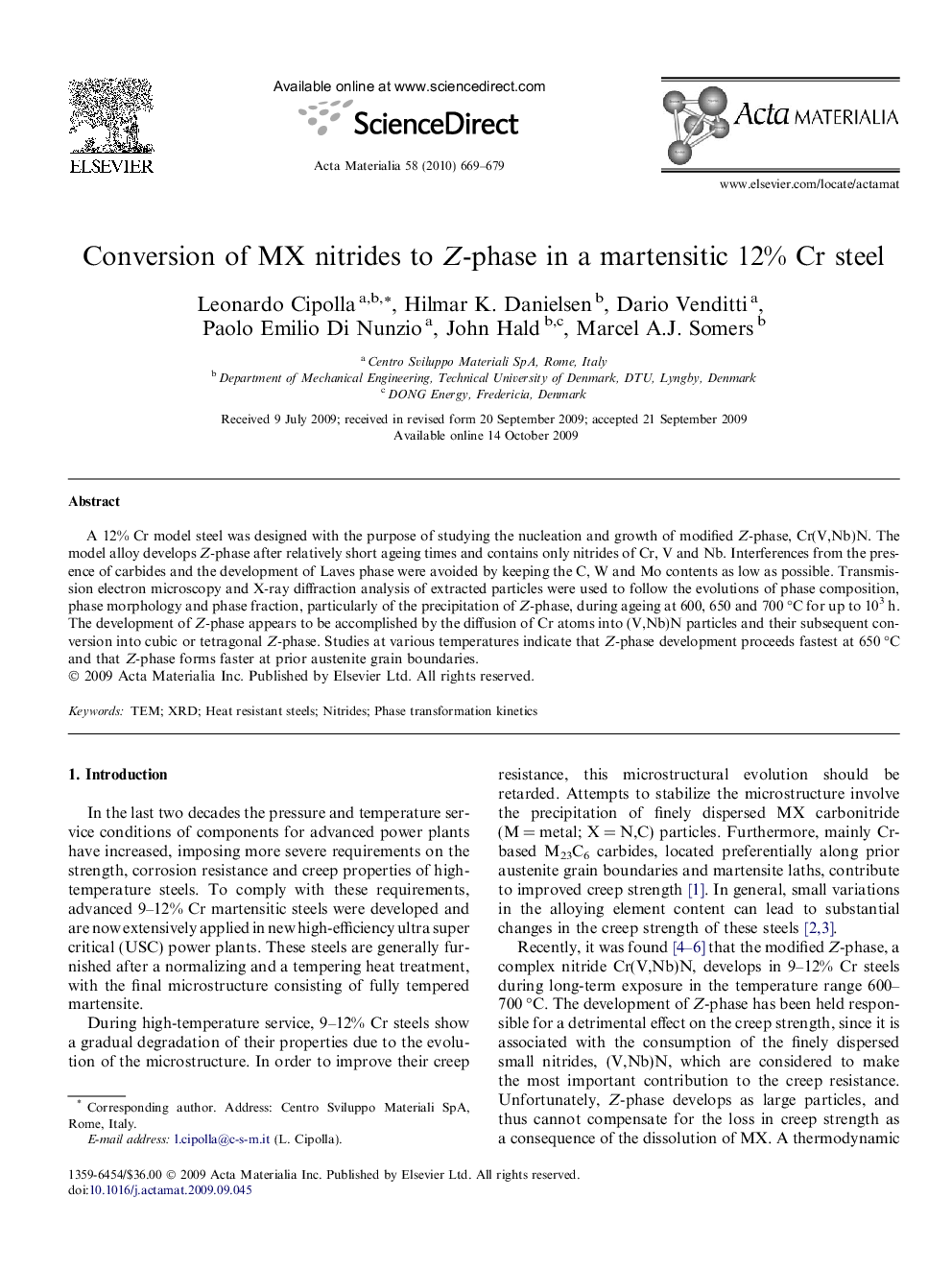| Article ID | Journal | Published Year | Pages | File Type |
|---|---|---|---|---|
| 1447895 | Acta Materialia | 2010 | 11 Pages |
A 12% Cr model steel was designed with the purpose of studying the nucleation and growth of modified Z-phase, Cr(V,Nb)N. The model alloy develops Z-phase after relatively short ageing times and contains only nitrides of Cr, V and Nb. Interferences from the presence of carbides and the development of Laves phase were avoided by keeping the C, W and Mo contents as low as possible. Transmission electron microscopy and X-ray diffraction analysis of extracted particles were used to follow the evolutions of phase composition, phase morphology and phase fraction, particularly of the precipitation of Z-phase, during ageing at 600, 650 and 700 °C for up to 103 h. The development of Z-phase appears to be accomplished by the diffusion of Cr atoms into (V,Nb)N particles and their subsequent conversion into cubic or tetragonal Z-phase. Studies at various temperatures indicate that Z-phase development proceeds fastest at 650 °C and that Z-phase forms faster at prior austenite grain boundaries.
